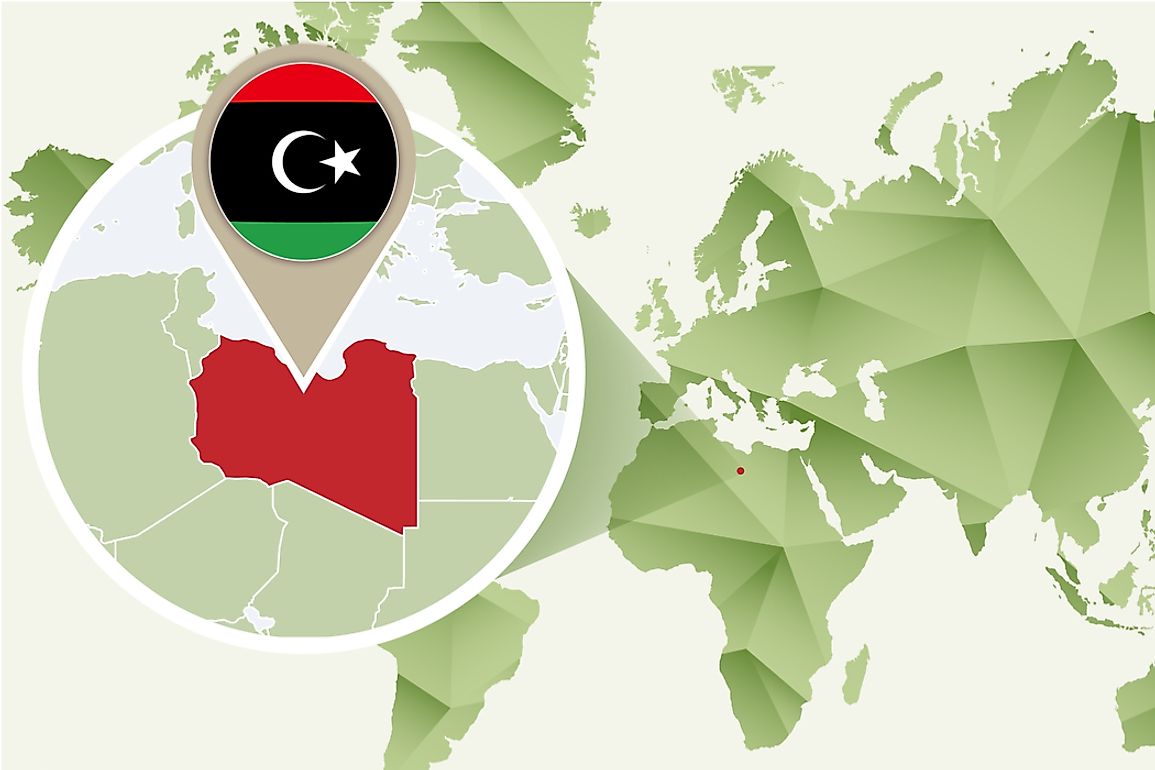What Continent is Libya In?

Libya derived its name from Latin word “Libye” which refers to “a state located west of Nile River.” This is further confirmed by the name “Libue” which was used to call “a place “where many Mediterranean cultural festivals were held. The current name as we know it was pronounced by an Italian explorer called Federico Minutilli in 1903 and in 1934 the Italian government officially called it Libya.
In Which Continent Is Libya Located?
Libya is located in Africa, in the Northern region. Though the citizens have been Arabized, the country is in Africa and participates in the African affairs. Libya is a member of the African Union that brings together all African countries. They participate in championships games such as the African Cup of Nations and all African Games. Libya is a member of various economics blocs and market integrations such as Arab Maghreb Union (AMU) which is an Economic integration of North African states, African Free Trade Zone (AFTZ), and the Common Market for Eastern and Southern Africa (COMESA).
Geography and Population
Libya is the 16th largest country in the world and the 4th largest country in Africa, occupying 673,362 square miles. It borders the Mediterranean Sea on a 1,100-mile long coastline. 90% of the country is a desert with rainfall intervals of five to ten years. The temperatures can rise to 58 degrees Celsius, making the Libyan Desert the hottest desert on earth.
The total population compared to land size is quite low with the majority living in towns and along the coast. There are 140 tribes making up a total population of slightly above six million people.
History of Settlement
Libya was occupied as early as 8000 BCE during the Bronze Age by the Neolithic inhabitants, Berber and the Phoenicians who established the first trading base. In 630 BCE, the Greeks had settled in the eastern region near Cyrene town. The Persians then invaded, conquered, and established their rule, though in 331 BCE the Ptolemaic rulers established their kingdom. The Ancient Tripoli city was established in the second century.
Politics and Governance
Libya is currently under a leadership of a prime minister of the government of national unity who is also the chairman of the Presidential Council. Laws are made in the House of Representatives and High Council of the State located in Tobruk.
After independence in 1951, King Idris took over as the leader. In 1959, significant oil deposits were discovered, generating a lot of money. The proceeds from the sale of petroleum were concentrated on the king and his inner circle, leading to a resistance movement led by Muammar Gaddafi in September 1969 to overthrow the government. The revolutionary movement known as Al Fateh took over and installed Gaddafi as the leader. He brought many reforms in governance, economy as well as on social issues. Gaddafi ruled until 2011 when he was overthrown.
Economy
The oil sector is the backbone of the economy since it accounts for 80% of the GDP and 97% of exports. Natural gas and gypsum are also found in smaller quantities. 90% of food requirements are imported. Most of the income was invested in military equipment and weaponry.











